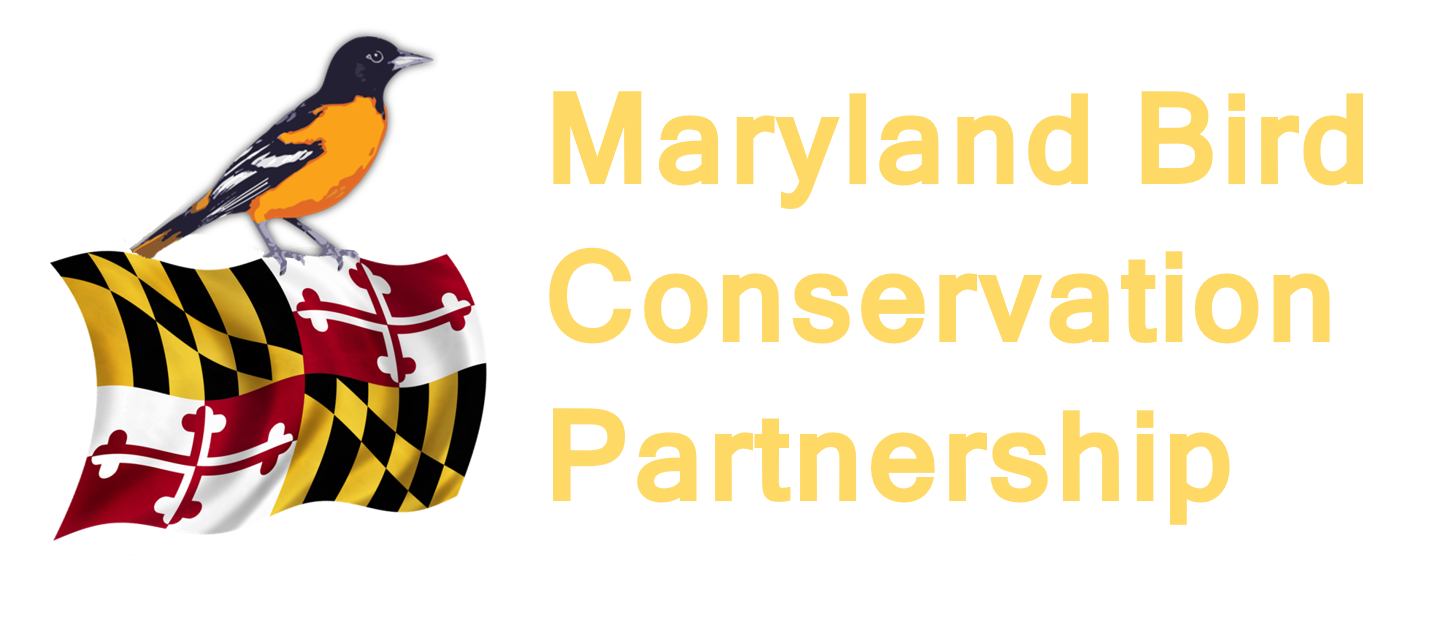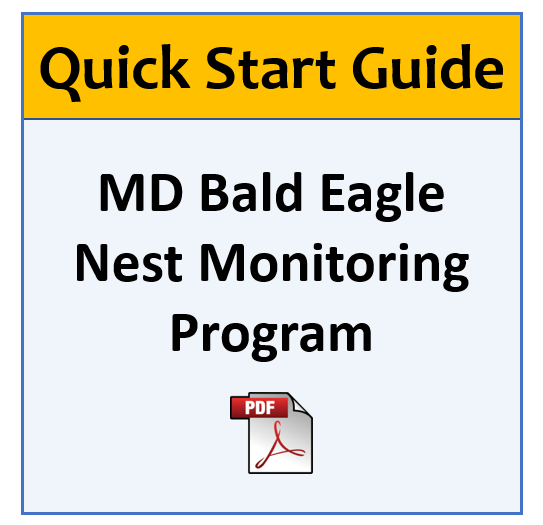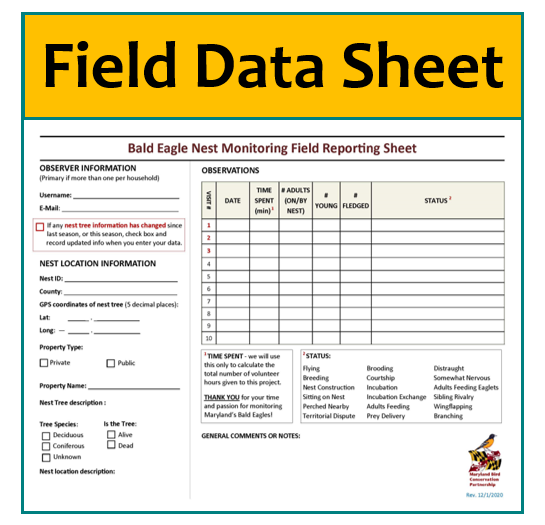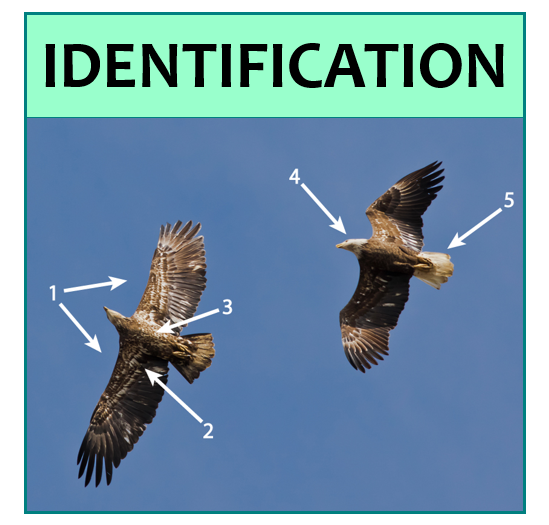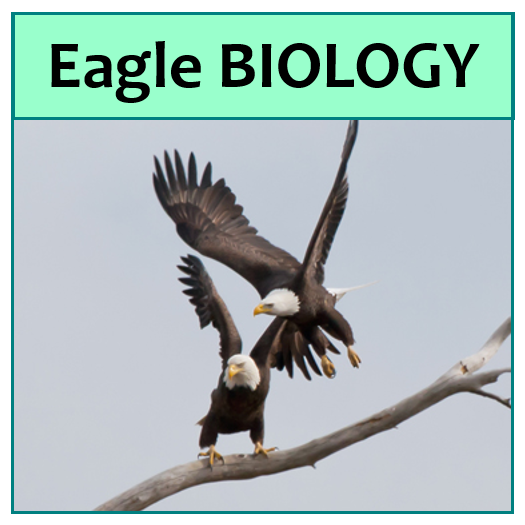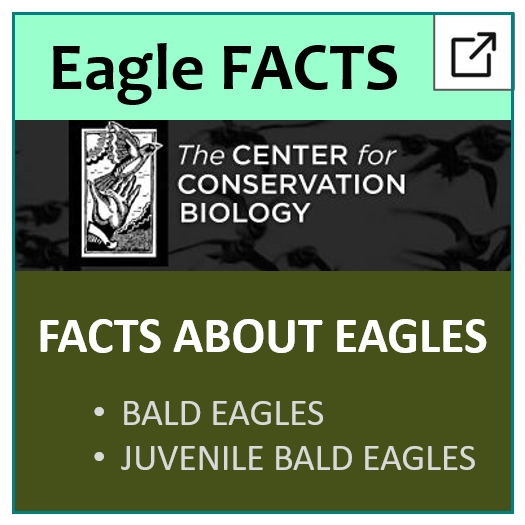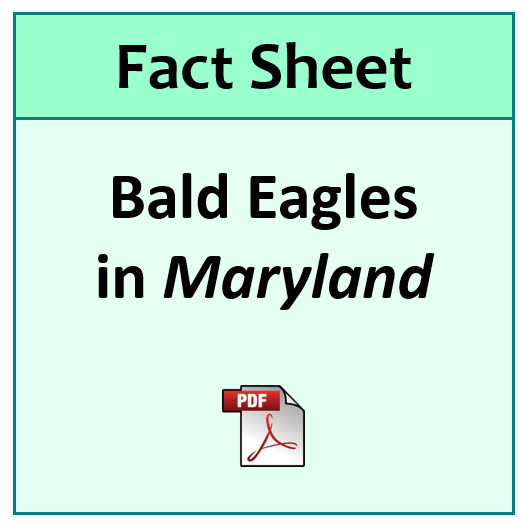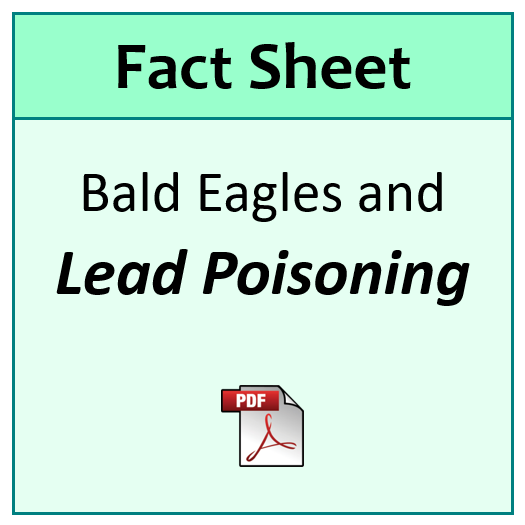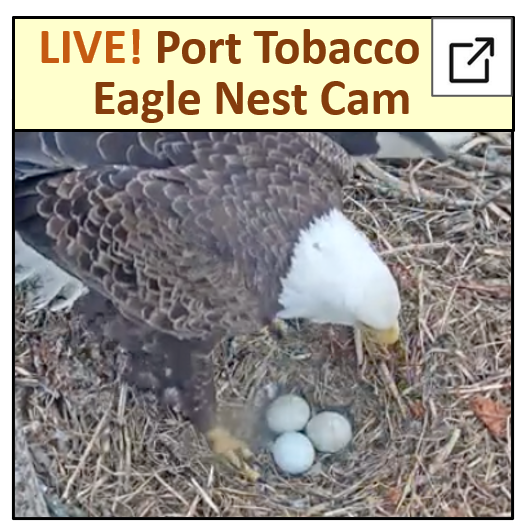Maryland Bald Eagle Nest Monitoring Program
_____________________________________________________
To report a wildlife crime against a Bald Eagle, call 1-844-FWS-TIPS
(1-844-397-8477)
How do I know if I need an eagle permit?
_____________________________________________________
The Bald Eagle: A Conservation Success Story
The recovery of our national symbol, the Bald Eagle (Haliaeetus leucocephalus), is considered one of the greatest conservation successes of the 20th century. From an all-time low of 44 nesting pairs in the state in 1977, it is estimated that at least 1400 pairs currently breed in Maryland. Today, the Chesapeake Bay region hosts the largest concentration of Bald Eagles in the lower 48 states. The Maryland Bird Conservation Partnership is recruiting volunteers to find and report Bald Eagle nests throughout Maryland and the District of Columbia, and to assist with monitoring these nests.
We ask volunteer nest monitors to visit the nest at least 3 times during the nesting season to observe and record:
- Adult and nest activity (January-March)
- Chicks in the nest (April)
- Fledged young (June-July)
Continue reading below to learn more about this program and how you can get involved.
_____________________________________________________
__________________________________________________________
Funding for Maryland Bird Conservation Partnership's Bald Eagle NestStory
was provided by a grant from Delmarva Power, an Exelon Company.
__________________________________________________________
The map below shows all Bald Eagle nests reported to the Maryland Bird Conservation Partnership. Lack of a nest at a specific location only means that a nest has not been reported. It does not mean that a nest does not exist. Please report new nest locations to us - click here to report.
NOTE: a green circle with a “√” means the nest is being monitored. An orange circle with a “?” means the nest is not yet being monitored.
OUR NEED TO MONITOR BALD EAGLES
State-funded surveys of Maryland’s Bald Eagle population were discontinued in 2005. Since then, the continuous threats from pollution (to Eagles and their food sources), increased frequency of violent storms (loss of Eagle nests), development (increased disturbance near nest sites and loss of habitat), and degraded fish populations in various tidal watersheds (food sources for Eagles) all contribute to the compelling need for ongoing monitoring of Bald Eagles. Our volunteers monitor eagle nests throughout the nesting season and report the number of eggs, hatchlings, and most importantly the number of eagles that successfully fledge. By monitoring nests throughout the state every year we can track population trends and identify where action may be needed if the population begins to decline. The monitoring program also provides valuable data to the US Fish & Wildlife Service.
WHAT CAN YOU DO TO HELP?
You can become a volunteer Bald Eagle nest monitor. Turn a desire to observe wildlife into a contribution to conservation of our Nation's iconic symbol. All you need are a spotting scope or binoculars, three days of free time spread out over the breeding season (December through July), and a small amount of time to get trained and to input your data. Our friends in Virginia should visit the VaEagles website run by the Center for Conservation Biology.
You can also download, print, and hand out our flyer "Bald Eagles are nesting in this neighborhood!" to educate local businesses and residents where an eagle nest exists in the neighborhood.
Inquiries concerning regulatory issues related to Bald Eagle nests should be directed to the U.S. Fish and Wildlife Service Migratory Bird Permit Office, 413-253-8643.
Questions?
Contact our Volunteer Coordinator at eagles@marylandbirds.org.
